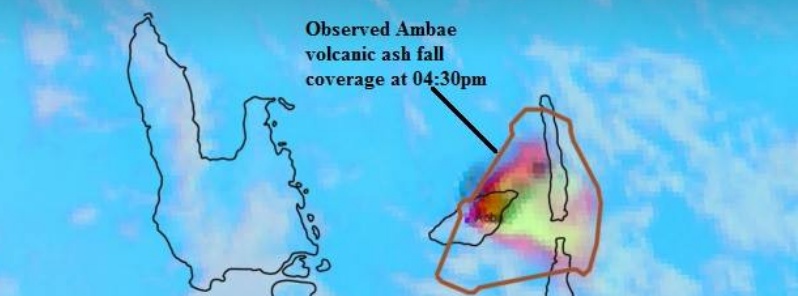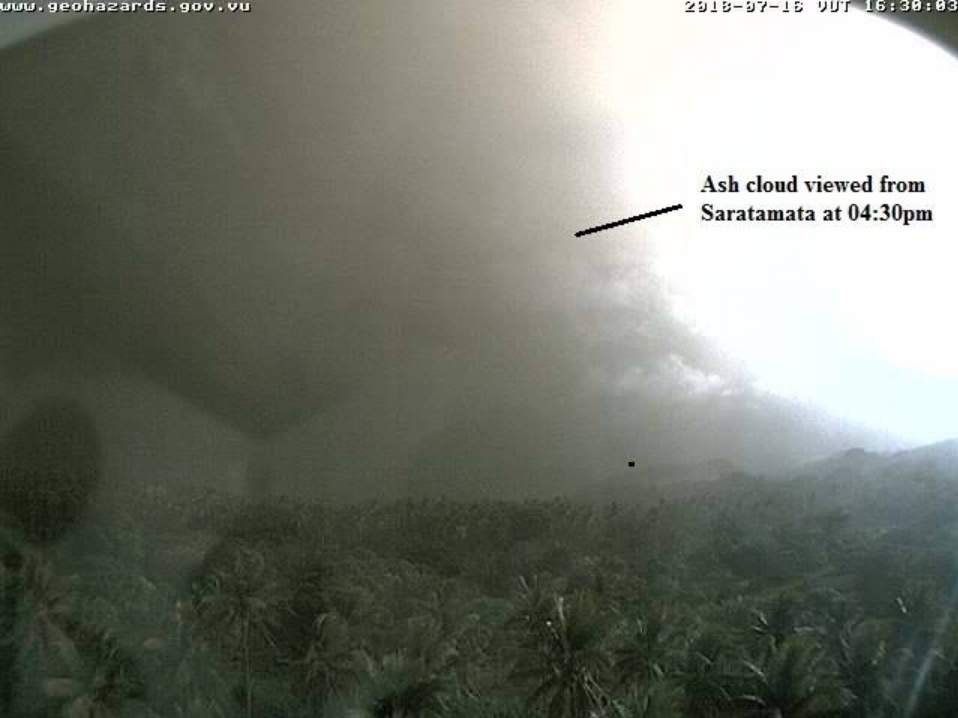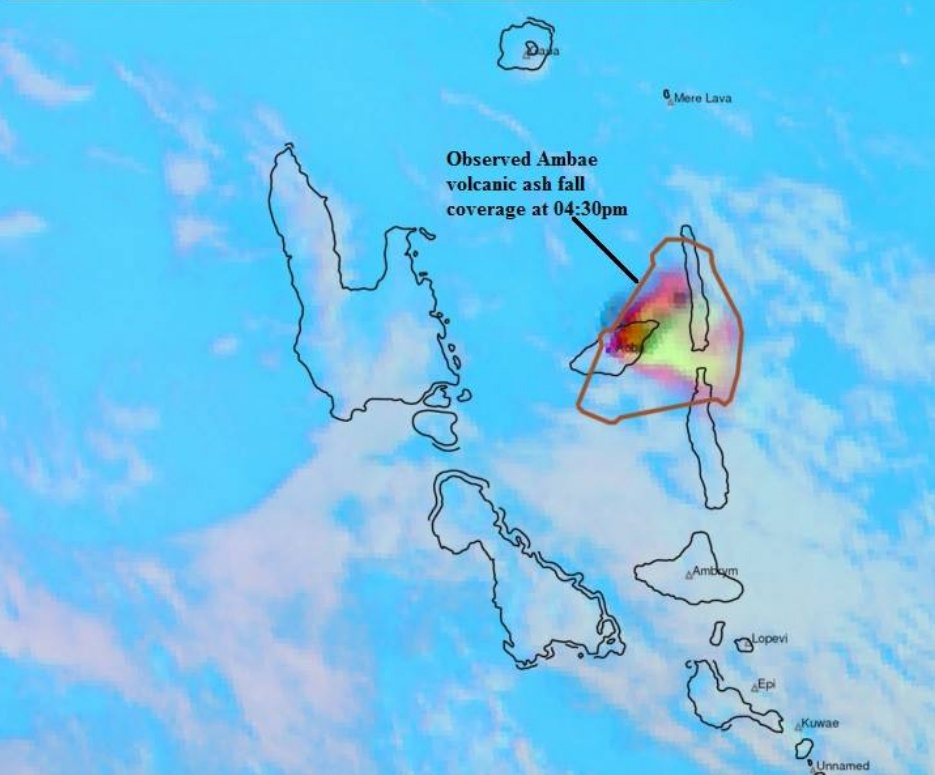Ambae volcano ejects ash up to 9.1 km (30 000 feet) a.s.l., Vanuatu

A strong eruption occurred at Vanuatu's Ambae volcano at 03:30 UTC on July 16, 2018. The eruption ejected ash up to 9.1 km (33 000 feet) above sea level.
This activity is consistent with the Volcanic Alert Level 2, the Vanuatu Meteorological and Geohazards Department (VMGD) said 08:00 UTC today.
Light to heavy ash fall are expected in the north, northeast, east, southeast and south of Ambae following the wind direction (Westerly winds) including areas from the North Pentecost to North Maewo.
The Danger Zone for life safety remains at 2 km (1.2 miles) radius from the active vent and the possibility that the volcano activity escalates to the level of minor eruption is low to moderate.
All tourism agencies, visitors, local authorities, people from Ambae Island and the general public must consider this information, VMGD said.

Image credit: VMGD

Image credit: VMGD
Although Vanuatu's Ambae volcano, also known as Manaro Voui and Aoba, made international headlines in 2017 after more than 13 000 people living around it had to be evacuated, a powerful eruption on April 5, 2018, which was 'missed by the media, and pretty much everyone' because it took place at night, emitted the most sulfur dioxide of any eruption since the 2015 eruption at Calbuco in Chile.
As reported by volcanologist Erik Klemetti, Ambae volcano has become more restless again starting mid-March 2018 and VMGD noted that these new eruptions mark a change in character for the volcano to more ash-rich, explosive eruptions versus the types that occurred in the fall of 2017.
"Ash from eruptions have fallen on residential and agricultural regions of the small island, contaminating water and potentially becoming a real hazard for the people living on the island again," Klemetti writes.
"This makes ash a larger hazard for air travel or water supplies, but also opens the possibilities of volcanic mudflows (lahars) related to ash deposits and heavy rains," he explains, adding that although the eruptions since mid-March haven’t made the news like the ones in the fall, they might be even more significant.
Read more:
Featured image credit: VMGD

Commenting rules and guidelines
We value the thoughts and opinions of our readers and welcome healthy discussions on our website. In order to maintain a respectful and positive community, we ask that all commenters follow these rules:
We reserve the right to remove any comments that violate these rules. By commenting on our website, you agree to abide by these guidelines. Thank you for helping to create a positive and welcoming environment for all.